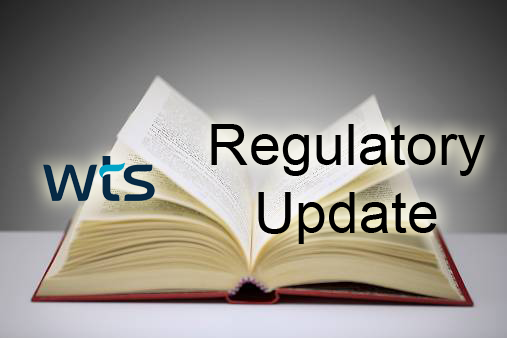According to Section 262.27 of the Code of Federal Regulations, Waste Minimization Certification, a generator who initiates a shipment of hazardous waste must certify to one of the following statements on the Uniform Hazardous Waste Manifest:
- (a)” I am a large quantity generator (LQG). I have a program in place to reduce the volume and toxicity of waste generated to the degree I have determined to be economically practicable and I have selected the practicable method of management, storage or disposal currently available to me which minimizes the present and future threat to human health and the environment.”
- (b) “I am a small quantity generator. I have made a good faith effort to minimize my waste generation and select the best waste management method that is available to me and I can afford.”
The “Program-in Place” statement for large quantity generators does not mandate a written Waste Minimization Plan. However, a formal plan will help a LQG to demonstrate compliance in the event of an inspection.
In its May 28, 1993 Federal Register (58FR 31114) Guidance To Hazardous Generators on the Elements of a Waste Minimization Program, US EPA outlined the following six basic elements that should be included in a generator’s hazardous waste minimization program to ensure conformance with “program-in-place:”
- Top Management Support
- Characterization of Waste Generation and Waste Management Costs
- Periodic Waste Minimization Assessments
- Cost Allocation
- Technology Transfer, and
- Program Implementation and Evaluation
These six elements need to consider the definition of Waste Minimization:
- “the reduction, to the extent feasible, of hazardous waste that is generated before its treatment, storage, or disposal”
- “any source reduction or recycling activity that results in:
- Reduction of the total volume of hazardous waste
- Reduction of the toxicity of hazardous waste, or
- Both”
Waste minimization practices include recycling/reuse, source separation, product substitution, manufacturing process changes, the use of less toxic raw materials, inventory management, modification of equipment, and personnel/best practices encompassing heightened awareness through training, communication aids, generating ideas, and getting employee commitments.
As the generator’s “program-in-place” is formalized, the following guidelines apply to each element.
- Top Management Support
- Waste minimization should be part of the organizational policy. Workers should be encouraged to adopt relevant policies in their day-to-day operations and encourage new ideas at meetings. Waste minimization should be a process of improvement as well as part of the organization’s plan to increase productivity and quality.
- Facilities should set specific goals for reducing the volume and toxicity of waste streams that are achievable within a reasonable timeframe. These goals may be qualitative and/or quantitative.
- Designate a Waste Minimization Coordinator, publicize success stories, recognize individual and collective accomplishments, and
- Train employees on the waste generating impacts that result from the way employees and contractors conduct their work procedures.
- Characterization of Waste Generation and Waste Management
- Generators should maintain a waste accounting system to track the types and amounts of wastes as well as the types and amounts of hazardous constituents in wastes, including the rates and dates they were generated
- Periodic Waste Minimization Assessments
- The generator’s program-in-place should identify sources of waste by tracking materials that eventually get accumulated as waste, from point of receipt to the point at which they become a waste.
- With each assessment, generators should perform mass balance calculations to determine input(s) and output(s) from targeted processes or facilities.
- Cost Allocation
- The waste generator should determine the true costs associated with waste management and cleanup, including the costs of regulatory oversight/compliance, documentation and reporting, loss production, discarded materials, transportation, treatment, storage and disposal, and liability insurance.
- Where practicable and implantable, organizations should appropriately allocate the true costs of waste management to the activities responsible for generating the waste in the first place.
- Encourage Technology Transfer
- Generators should seek or exchange technical information on waste minimization from other parts of the organization/facility, from other companies, trade associations/affiliates, professional consultants and university or government technical assistance programs.
- Program Implementation and Evaluation
- The generator should formalize programs for implementing recommendations made by the opportunity assessments, evaluations, waste minimization teams, etc. as well as for conducting periodic review of program effectiveness. These reviews should provide feedback and identify areas for improvement.

